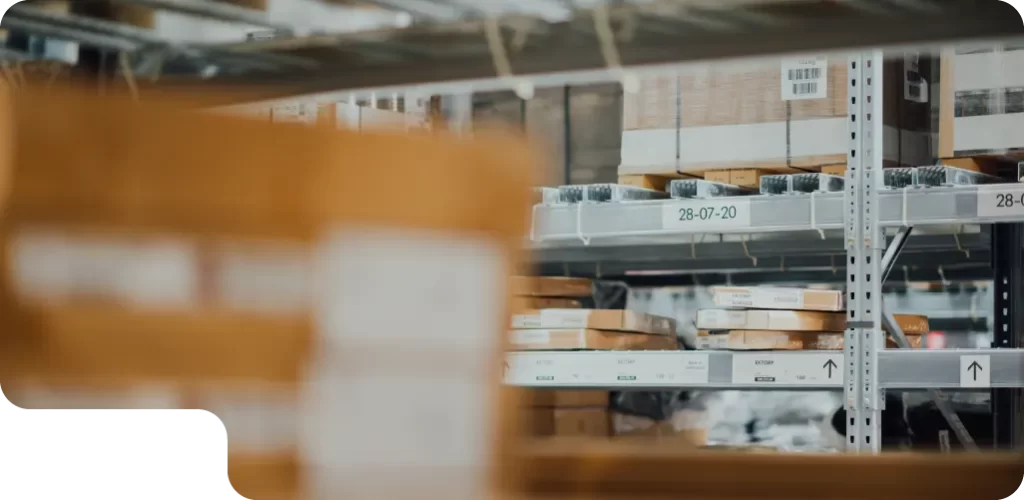Table of Contents
More Inventory Content
Get the latest e-commerce industry news, best practices, and product updates!
Table of Contents
Share This
More Inventory Content
Get the latest e-commerce industry news, best practices, and product updates!
What is an Inventory Level?
Inventory is at the center of all business operations. Inventory level refers to the condition when a business maintains an optimum inventory level to meet customer demands at the right time and price. Furthermore, an inventory level maintained by any company should be such that they neither experience overstock nor understock of inventory.
Inventory levels can vary from business to business, depending on multiple factors. Furthermore, maintaining a predetermined inventory level is crucial for businesses to ensure the smooth running of business operations. Lastly, companies that don’t hold a fixed level of inventory based on their customer demands and sales trends can experience high costs, low revenue, inventory obsolescence, and more.
Let’s find out why maintaining an optimum inventory level is essential for small and large businesses.

Why is an inventory level important?
Here are some key reasons why proper inventory levels are crucial for businesses.
Prevents Understocking Of Inventory
Running short of inventory levels can be a critical error for most businesses. Understocking leads to a direct loss in business sales and lowers customers’ loyalty to your brands. Furthermore, the inability to fulfill your customers due to the unavailability of stock gives your business a straight ticket to losing its positive brand image.

Prevents Overstocking Of Inventory
Stocking up requires money and a lot of it. Thus, procuring unnecessary inventory costs money that can otherwise be invested in other areas.
Furthermore, the excess stock you leave at the warehouse is at your risk. The more your excess inventory, the higher the likelihood of it getting damaged or obsolete.
Furthermore, the excess inventory also costs your business money in terms of storage and handling charges. Though it’s essential to keep some safety stock to prevent stockouts, the buffer stock should be maintained at reasonable levels.

Evaluation Of Sales Performance
Optimum or accurate inventory levels help your business track sales performance and trends. Additionally, you can identify poor-performing products only when you understand the sales performance of each product. Planning for seasonal and occasional spikes in demand for particular products is also crucial. You can also figure out which products are performing well and which lag with comprehensive sales records and inventory management.

What are different levels of inventory?
Inventory is an essential asset for a business. Thus, you must understand what different inventory levels can mean for your business and how they impact your inventory turnover ratio.
Minimum Inventory Levels
A business should maintain minimum inventory levels at all times to ensure the availability of enough products and raw materials to produce other products. If a company fails to maintain a minimum level of inventory can lead to production delays due to stockouts. Minimum inventory levels are different for each business.

Maximum Inventory Level
Unlike the minimum inventory level, a business should not exceed its maximum inventory level. Maximum inventory levels are crucial since it gets businesses to avoid arriving at the situation of overstocking raw materials and other products.
Stocking too many products leads to high storage and handling charges and increases the likelihood of damage, pilferage, and obsolete products.
Danger Level
As the name indicates, a company should never arrive at the ‘danger inventory levels’ since it implies that the inventory supply is getting close to stockout. Suppose a business reaches a ‘danger inventory level’ due to any circumstance. In that case, it will have to speed up the inventory buying process, even if it means paying an additional price to get the inventory.
Arriving at this situation pushes businesses to procure inventory from suppliers who can deliver the stock in as less time as possible. Eventually, it increases the transportation and overall costs of procuring supply.
Average Level
The average inventory level refers to the average level of raw materials businesses keep available in their warehouses at any time.

What are optimal inventory levels?
As the term suggests, optimum inventory levels are the ideal quantities of products that any business should have in a warehouse or a fulfillment center at any given time. You can reduce the risk of making common inventory management issues, including bearing excess inventory costs and facing loss in sales due to out-of-stock items.
Holding too much inventory requires too much capital, stays in the storage for long, and might even lose customers over time, eventually becoming unsaleable. However, maintaining too little stock also proves risky since you run the risk of backorders and stockouts, lowering sales and profit, and tarnishing your brand image.
Minimum Inventory Levels
A business should maintain minimum inventory levels at all times to ensure the availability of enough products and raw materials to produce other products. If a company fails to maintain a minimum level of inventory can lead to production delays due to stockouts. Minimum inventory levels are different for each business.
Here are a few points you should consider while optimizing your inventory levels:
- Inventory levels vary for all businesses, and there’s no one-size-fits-all optimum inventory level. You must determine your optimum inventory levels with careful analysis of sales trends, performance, customer demand, and factors that might affect the global supply chain network.
- Each SKU may require a different optimum inventory level based on the demand for a particular product.
- Optimum inventory levels can vary with time. An optimal inventory level that worked for you in the previous month or quarter might not work for you now. Furthermore, optimum inventory levels change with seasonal changes in demand.
Moreover, maintaining an optimum level of inventory gets more complex when businesses:
- Increase their order volume
- Introduce more products
- Expand the physical distribution

Optimal inventory level: How to calculate it
Four primary components determine optimal inventory levels for different products and businesses.
Customer Demand
Your business should analyze recent trends in customer demand, forecast demand for each SKU, and the seasonal demand for products.
Inventory Ratio
Find out each SKU’s demand with a popular SKU organizing method, ABC analysis.

Product Type
The characteristics of each product are significant in assessing the optimum inventory levels.
Maximum, Minimum, And Safety Stock Levels
For each SKU, you can calculate the optimum inventory levels. Thus, space, methodology, storage systems, and handling equipment will determine the maximum stock level. In contrast, demand and capacity to manage each order will determine the minimum stock level.
Lead Time
You should know the lead time for each supplier, the time that elapsed from ordering the inventory to the time it reaches your warehouse.
Why it’s important to maintain healthy inventory levels
Healthy or optimum inventory levels indicate a business’s efficiency and profitability across the global supply chain network. Your business can improve cash flow and avoid overstocking and understocking by maintaining a healthy inventory level.
Furthermore, maintaining a healthy inventory level enables businesses to optimize their warehouse capacity, constantly meet customer demand, and build customer loyalty and brand image.

Image credits: SlideBazaar.com- Supply chain powerpoint templates
Too much and too little of everything can lead to negative consequences. The same happens with hoarding large inventory quantities and not maintaining enough inventory levels. You risk spending too much money on additional aspects, including handling and storing inventory by holding too much stock.
Lastly, when you better understand your stock levels, it can help you with supply chain planning apart from maintaining optimum levels of inventory. Since you know how to determine the best time to reorder merchandise, it improves the accuracy of inventory management and control.

How to determine optimal inventory levels
For your business to determine the optimal inventory level, you will have to do some rigorous calculations and think back to get the historical order and inventory trends and data. Furthermore, you might also need to consider when the inventory needs to be reordered regarding the goods arriving in time from your supplier and the time you will need to fulfill a customer order. Here are three factors, considerations, and best practices to help businesses determine the ideal inventory level.
Here are a few points you should consider while optimizing your inventory levels:
Inventory Production Lead Times
Suppose you have an understanding of inventory production lead times. In that case, you can make more informed decisions for your business, how much inventory needs to be reordered, and when to keep the desired inventory level. The quantity of merchandise you will hold at a given time is also determined by the amount of time your supplier and manufacturer take to transform raw materials into finished products after placing the order.
We have listed some points you should remember when calculating inventory production lead times.
- Consider the breaks your supplier or manufacturers might take, particularly during the holiday season.
- Calculate the time it takes the inventory to reach you from the supplier.
- Consider how long it takes you to receive and store inventory.
Safety Stock Availability
Safety stock refers to the additional eCommerce inventory your business has set aside for unprecedented situations. These circumstances can include a sudden spike in orders or delays in the production of goods or transit. You must be aware of the following while calculating the safety stock:
- Maximum lead time
- Maximum daily usage
- Average lead time
- Average daily usage
The economic order quantity (EOQ) formula also proves helpful in determining the optimum inventory levels, including the safety stock. EOQ is an excellent approach to figuring out how much inventory you should keep on hand to meet consumer demand while keeping inventory storage expenses low.
Demand Forecasting
You can predict future customer demand and sales trends better with proper demand forecasting. Furthermore, demand forecasting also helps businesses determine how much inventory they need during a particular time. When you forecast demand, you not only make better inventory management decisions but decisions that can also impact financial and logistical operations. Demand forecasting does not always guarantee 100% accurate results but gets you deeper insights into the supply chain network.

Best practices for maintaining optimal inventory levels
Though optimum inventory levels are different for different businesses, some methods are universally applicable to all companies for maintaining an optimum inventory level.
Implement An Inventory Tracking System
You can improve inventory control across the distribution network by understanding how much of each SKU is located at a particular location. Inventory tracking software can offer your business real-time access to inventory levels across sales channels and logistics centers.
Determine Reorder Points
You can set a reorder point. A reorder point refers to the minimum inventory level that helps businesses determine when it’s time to reorder the stock.
Use An Inventory Management System
When your business uses an inventory management system that matches the supply chain network, your distribution network can function at maximum capacity.
Communicate Clearly With Your Supplier
An effective inventory management system is established with effective communication between businesses and suppliers. You must communicate your expectations, changes in the delivery schedule, etc., to the supplier.
Carry Out Inventory Audits
Automate your inventory and warehouse audits with an inventory storage system or 3PLs’ fulfillment technology.

How to keep inventory levels low
- Calculate how much inventory you currently have on hand. Divide the cost of all stocks you handle or sell by the number of days they will last. It gives you the cost of inventory that you use daily.
- Divide the total cost of your current merchandise by the result of the previous calculation. The figure you arrive at indicates how long your inventory will last before you it all.
- You must consult your supplier to determine the frequency at which he can deliver the inventory.
- Determine the minimum inventory level your business can retain when it meets customer demand during the time between two deliveries.
Determine the inventory level you want to retain as buffer or safety stock. - Let your supplier know of any changes in the delivery schedule.
- Review your inventory levels to check whether the delivery schedule needs any adjustment.
Sign up today and leave the logistics to us
Sign up and we will get back to you within 24 hours to discuss what services would be best for your business needs. Or speak with us now and tell us what you need.
FAQs
- Reduce inventory supplier lead time
- Eliminate obsolete inventory
- Optimize order frequency and size
- Low storage costs
More storage space - Easy warehouse management
- Low chances of damage, theft, and obsolescence
- Improve the supply chain management
- Maintain minimum inventory levels
- Reduce process costs
- Increase turnover rates
- Improve storage space availability
- Reduce waste
- Meeting customer demand
- Order lead time
- Profits directly correlate to inventory
- More cash flow
- Turnover
- Inventory to sales ratio
- Past sales trends
- Real-time reporting of inventory data
- Reduce overall inventory costs
- Minimize stock waste
- Automate reorder to prevent stockout